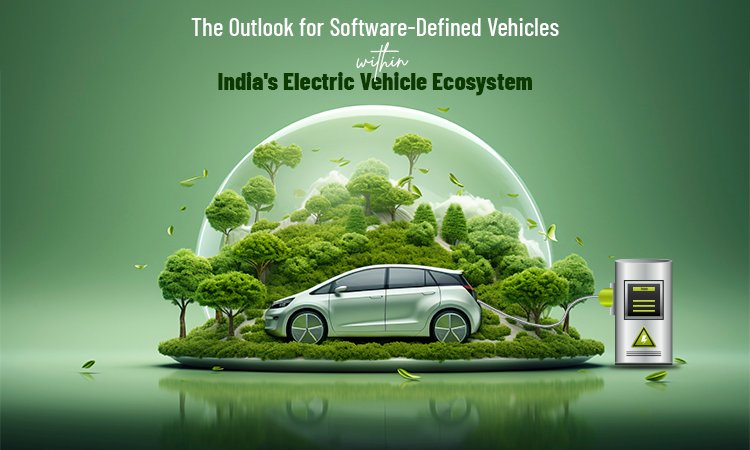
The Outlook for Software-Defined Vehicles within India's Electric Vehicle (EV) Ecosystem
India’s electric vehicle (EV) revolution is not just about transitioning from internal combustion engines to batteries—it’s about embracing software-defined vehicles (SDVs) as the next frontier of mobility. As the country accelerates toward its goal of 30% EV adoption by 2030, SDVs are poised to redefine the automotive landscape with smarter, safer, and more connected driving experiences.
The Rise of SDVs in India
SDVs represent a paradigm shift where software, rather than hardware, dictates vehicle functionality. These “computers on wheels” leverage AI, IoT, and advanced sensors to enable real-time data processing, over-the-air (OTA) updates, and autonomous driving capabilities. In India, where traffic congestion, pollution, and road safety are critical concerns, SDVs offer transformative solutions:
- Enhanced Safety: Advanced Driver Assistance Systems (ADAS) in SDVs can detect drowsiness, prevent collisions, and optimize braking—addressing India’s high accident rates.
- Seamless Connectivity: Vehicle-to-everything (V2X) technology allows SDVs to communicate with infrastructure, reducing traffic bottlenecks and improving route efficiency.
- Personalized Experiences: AI-driven infotainment and adaptive interfaces cater to India’s tech-savvy consumers, who increasingly demand smart features akin to smartphones.
Mr. Akhilesh Srivastava’s Vision for SDVs and Road Safety
As a globally recognized technocrat and Road Safety Ambassador for the International Road Federation (IRF), Mr. Srivastava has championed the integration of AI, IoT, and digital infrastructure into India’s transportation ecosystem. His initiatives include:
- FASTag & Digital Tolling: As the architect of India’s FASTag-based Electronic Toll Collection (ETC), he reduced congestion and fuel waste, saving ₹20,000 crore annually. His work on GPS-based tolling pilotsfurther paves the way for SDV-compatible infrastructure.
- Road Safety 2.0: His AI-powered crash prediction systemsand real-time enforcement technologies aim to cut India’s road fatalities (170,000 annually) by compensating for human errors.
- Smart Highways: At NHAI, he pioneered 24/7 surveillance systems, e-MB portals for transparent construction monitoring, and drone-based highway audits—laying the groundwork for SDV-ready roads.
Challenges and Opportunities
While SDVs promise a mobility revolution, India must address:
- Infrastructure Gaps: Poor 5G/4G networks and road conditions hinder real-time data processing.
- Regulatory Frameworks: Policies for autonomous driving and data security lag behind technological advancements.
- Affordability: High costs and consumer skepticism remain barriers.
Mr. Srivastava’s leadership at IRF India and ITS India Forum focuses on bridging these gaps through public-private partnerships, global collaborations, and Centers of Excellence for smart mobility. His advocacy for green bitumen and sustainable road construction aligns with SDVs’ low-carbon goals.
The Road Ahead
By 2030, SDVs could dominate India’s urban mobility, reducing emissions and accidents. Success hinges on:
- Government Support: Expanding FAME-II and PLI schemes to incentivize SDV R&D.
- Startup Innovation: Homegrown firms like Vecmoconare already developing AI-driven EV diagnostics.
- Collaborative Ecosystems: As Mr. Srivastava emphasizes, multi-stakeholder efforts—from OEMs to policymakers—are critical to scale SDVs sustainably.
“Technology must compensate for human limitations to achieve safer, greener roads,” asserts Srivastava. With India’s EV market projected to hit 10 million annual sales by 2030, SDVs—backed by visionary leaders like him—will be the cornerstone of a smarter, cleaner mobility future.



